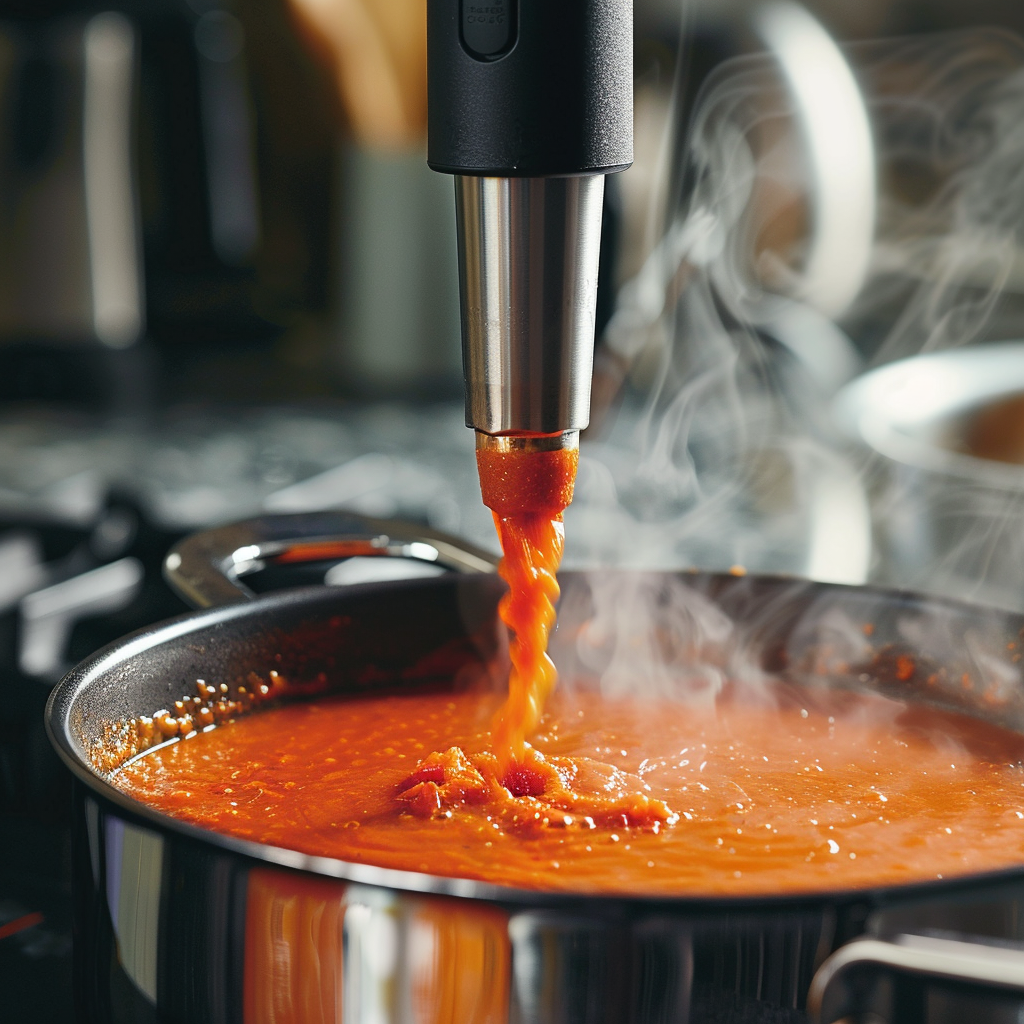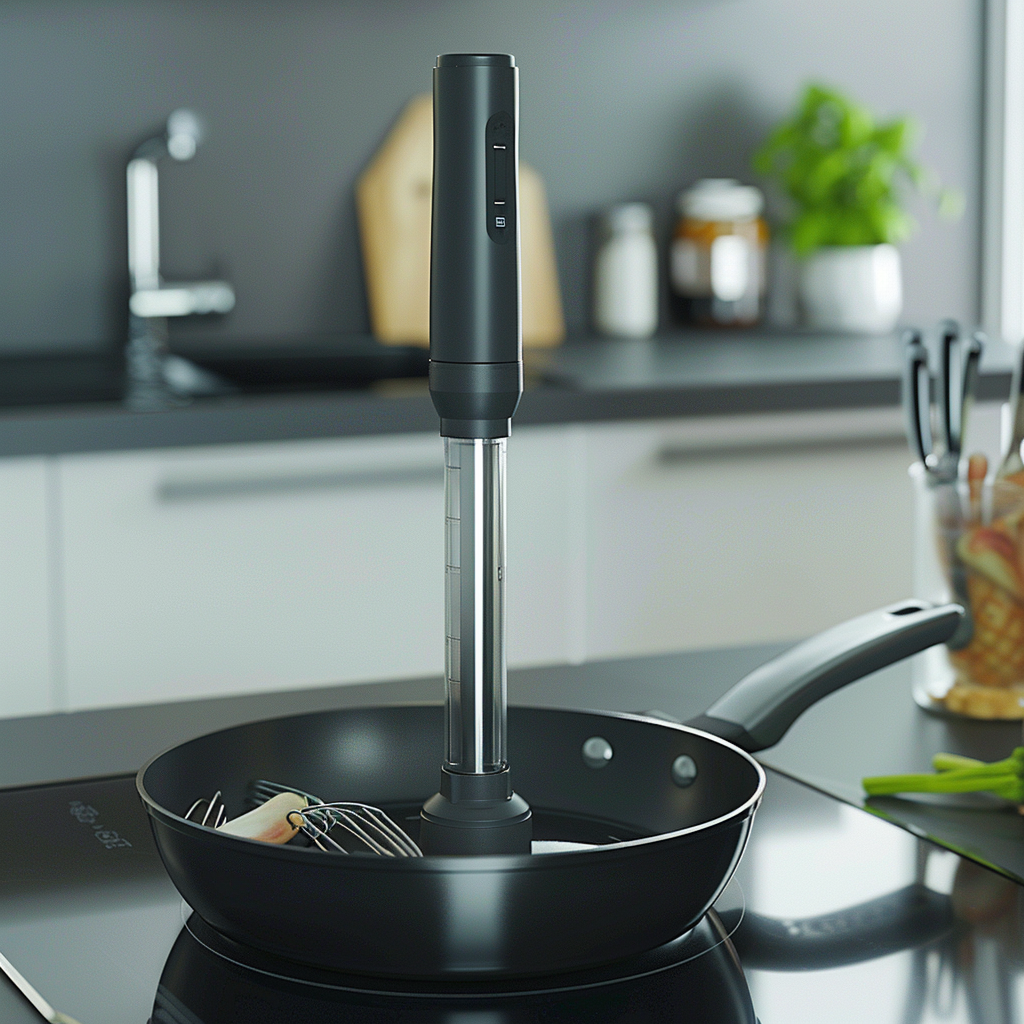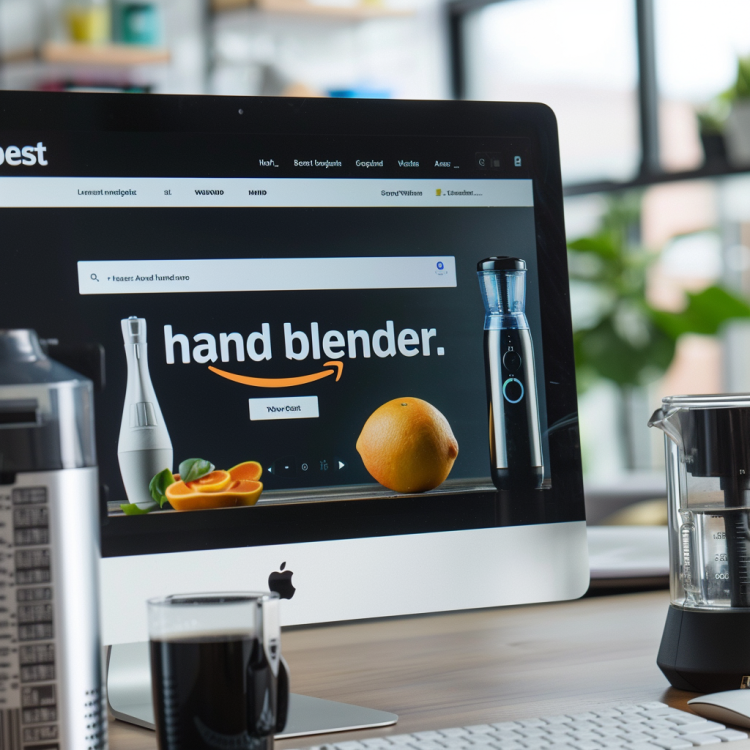
Problem: Imagine you’re in the middle of preparing a delicious homemade soup, but the process is messy and time-consuming because you have to transfer hot liquids to a traditional blender. Not only does this increase the risk of spills and burns, but it also interrupts your cooking flow. You want a tool that can make this process smoother and more efficient.
Agitation: You’ve heard about immersion blenders, but you’re not sure if they can truly transform your cooking experience. Will it be powerful enough? Is it versatile enough to handle different culinary tasks? The last thing you need is another kitchen gadget that doesn’t live up to its promises.
Solution: The immersion blender is the game-changer your kitchen needs. This powerful, handheld tool allows you to blend ingredients directly in the pot or bowl, eliminating the need for multiple appliances and reducing cleanup time. Whether you’re making soups, sauces, or even smoothies, the immersion blender brings convenience and creativity to your culinary adventures. Let’s dive into what an immersion blender is and how it can elevate your cooking.
What is an Immersion Blender in Culinary?
An immersion blender, also known as a stick blender or hand blender, is a handheld kitchen tool that blends or purees food directly in the container it’s being prepared in. Unlike traditional blenders, where ingredients must be transferred to a separate pitcher, an immersion blender can be immersed directly into the pot, bowl, or even a cup. This makes it incredibly versatile and convenient, especially for tasks like pureeing soups, making sauces, or whipping up a quick smoothie.
In culinary practice, immersion blenders are prized for their versatility. They can handle a variety of tasks, from blending soups and sauces to whipping cream and making baby food. Professional chefs and home cooks alike use them to achieve smooth, consistent textures without the hassle of transferring hot or heavy ingredients between containers.
Some key features of an immersion blender in culinary use include portability, ease of use, and speed. It’s easy to move around and use in different containers, making it more convenient than countertop blenders. With one-hand operation, it simplifies many cooking tasks, allowing for greater control over the blending process. Immersion blenders are fast and efficient, often with multiple speed settings to suit different culinary needs.
Overall, an immersion blender is a versatile tool that can simplify and enhance your cooking, making it easier to prepare a wide range of dishes with professional results.

When Not to Use an Immersion Blender
While immersion blenders are incredibly versatile, there are certain situations where they might not be the best tool for the job.
Thick or Hard Ingredients: Immersion blenders can struggle with very thick or dense mixtures, such as thick doughs or large quantities of nuts. These can put too much strain on the motor, leading to uneven blending or even damaging the appliance.
Crushing Ice: If you need to crush ice, an immersion blender is generally not suitable. The blades are not designed to handle hard ice cubes, and attempting to do so can dull the blades or damage the motor.
Very Hot Liquids: While immersion blenders are often used in hot soups, you need to be cautious when blending extremely hot liquids. Sudden splashes can occur, leading to potential burns. It’s best to let the liquid cool slightly before blending or use lower speeds to minimize splattering.
Fibrous Vegetables: Vegetables like celery or asparagus contain long, tough fibers that can wrap around the blender’s blades, clogging the mechanism and causing the blender to overheat or underperform. For such ingredients, a traditional blender or food processor might be more effective.
Small Quantities: If you’re working with a very small amount of food, an immersion blender may not work efficiently, as the blades need enough material to blend properly. In such cases, a smaller blender or even a manual method like whisking might be more appropriate.
Understanding when not to use an immersion blender ensures that you get the best results while protecting your appliance from unnecessary wear and tear.
Will an Immersion Blender Scratch My Pan?
One common concern with using an immersion blender is whether it might scratch non-stick or delicate surfaces, such as certain types of cookware.
Blade Guard Material: Most modern immersion blenders come with a plastic or silicone-coated blade guard to prevent scratching. This guard surrounds the blades and ensures that the metal parts don’t come into direct contact with your cookware. When used correctly, these designs significantly reduce the risk of scratching.
Proper Usage: To further prevent scratching, always keep the blender moving while in use, and avoid pressing it too hard against the bottom or sides of the pan. If your blender’s blade guard is metal, be extra cautious, especially with non-stick or enameled cookware.
High-Quality Cookware: The quality of your cookware also matters. Lower quality non-stick surfaces may be more prone to scratching, while high-quality pans with tougher coatings are generally more resistant.
In conclusion, while it’s possible for an immersion blender to scratch a pan, careful usage and choosing a model with a protective blade guard can minimize this risk.

Does an Immersion Blender Work Like a Food Processor?
While an immersion blender and a food processor share some overlapping functions, they are fundamentally different tools designed for specific tasks.
Blending vs. Processing: An immersion blender is primarily used for blending liquids and pureeing soft foods directly in their containers. It excels at tasks like making soups, smoothies, and sauces, where you need to achieve a smooth, even consistency.
Chopping and Slicing: A food processor, on the other hand, is better suited for chopping, slicing, grating, and shredding. It comes with a variety of blades and attachments that can handle more complex tasks, such as making dough, grinding meat, or chopping vegetables uniformly.
Capacity: Food processors are generally larger and can process larger quantities of food at once, making them ideal for bulk tasks. Immersion blenders are better for smaller, quick jobs and don’t require transferring ingredients between containers.
Versatility: While immersion blenders are versatile, they are not as versatile as food processors. For example, an immersion blender won’t be able to knead dough or finely chop ingredients to the same degree as a food processor.
In summary, while an immersion blender is a convenient and versatile tool for blending and pureeing, it doesn’t replace the more extensive capabilities of a food processor. They each have their strengths, and having both in your kitchen can cover a wide range of culinary needs.



